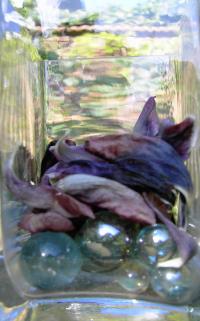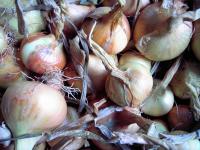Augenblicke* Anblicke* Ausblicke
Das Euro-Haus: Kunst über die Krise - ZDF heute in europa ...
25. Apr. 2012 – Ein Haus für 1,4 Milliarden Euro. Der Bauherr ein Opfer der Finanzkrise und arm. Klingt alles ziemlich absurd? Es ist ein Kunstprojekt und ...
Desiderata
Go placidly amid the noise and haste,
and remember what peace there may be in silence.
As far as possible without surrender
be on good terms with all persons.
Speak your truth quietly and clearly;
and listen to others,
even the dull and the ignorant;
they too have their story.
Avoid loud and aggressive persons,
they are vexations to the spirit.
If you compare yourself with others,
you may become vain and bitter;
for always there will be greater and lesser persons than yourself.
Enjoy your achievements as well as your plans.
Keep interested in your own career, however humble;
it is a real possession in the changing fortunes of time.
Exercise caution in your business affairs;
for the world is full of trickery.
But let this not blind you to what virtue there is;
many persons strive for high ideals;
and everywhere life is full of heroism.
Be yourself.
Especially, do not feign affection.
Neither be cynical about love;
for in the face of all aridity and disenchantment
it is as perennial as the grass.
Take kindly the counsel of the years,
gracefully surrendering the things of youth.
Nurture strength of spirit to shield you in sudden misfortune.
But do not distress yourself with dark imaginings.
Many fears are born of fatigue and loneliness.
Beyond a wholesome discipline,
be gentle with yourself.
You are a child of the universe,
no less than the trees and the stars;
you have a right to be here.
And whether or not it is clear to you,
no doubt the universe is unfolding as it should.
Therefore be at peace with God,
whatever you conceive Him to be,
and whatever your labors and aspirations,
in the noisy confusion of life keep peace with your soul.
With all its sham, drudgery, and broken dreams,
it is still a beautiful world.
Be cheerful.
Strive to be happy.
Max Ehrmann, Desiderata, Copyright 1952.
Nierstein
Für Kurswechsel bei Mobilität
02.03.2011 - NIERSTEIN
Von Beate Nietzel
LANDTAGSWAHL Grüne wollen andere Verkehrspolitik / Direktkandidatin Pia Schellhammer in Nierstein
Ist die Zeit wirklich schon reif für Elektrofahrzeuge, obwohl der Strom derzeit noch überwiegend aus Kohle- und Atomkraftwerken kommt? Wie lassen sich die Menschen in den abgeschiedenen Regionen von Rheinland-Pfalz besser anbinden? Und wie lassen sich Klima- und Umweltschutz forcieren?
Dass die Entwicklung des Verkehrs derzeit grundsätzlich in die falsche Richtung läuft, ist für die Grünen klar: „GRÜNland-Pfalz steigt um“, heißt denn auch ihr Motto für die Landtagswahl am 27. März. Vor einem mit knapp zwei Dutzend Köpfen überschaubar besetzten, dafür äußerst diskussionsfreudigen Publikum fächerte jetzt ein rein weibliches Quartett aus Landes- und Bundesexpertinnen der grünen Partei auf dem Podium im Niersteiner „Winzercafé Kopp“ die Zukunftschancen, aber auch Probleme der Umsetzung einer nachhaltigen Mobilität auf.
Was tun, wenn der Bahnanschluss verpasst ist?
Eingeladen hatte der Kreisverband von Bündnis 90/Grünen mit Pia Schellhammer, Kandidatin der Grünen Jugend auf Platz sieben der Landesliste und Direktkandidatin im Wahlkreis 31. Sie begrüßte ihre Kandidaten-Kollegin Jutta Blatzheim-Roegler, Sprecherin der Bundesarbeitsgemeinschaft Verkehr, die Bundestagsabgeordnete Ulrike Hoefken sowie Helga Schmadel, Landes- und Kreisvorsitzende des Verkehrsclubs Deutschland (VCD). „Es kann nicht mehr um die straßenzentrierte Mobilität gehen“, so Ulrike Hoefken. Die Verkehrsexpertin aus der Südeifel mit zweitem Wohnsitz in Bodenheim weiß aus eigener Erfahrung, dass etwa Pendler aus Rheinhessen oft genug ihren Bahnanschluss am Römischen Theater in Mainz verpassen.
Der Verkehrspolitik in Bund, Land und Kommunen lägen aus jetziger Sicht falsche Prognosen zugrunde: „Ausgehend von einem Ölpreis von 60 Dollar je Barrel, wurde eine Steigerung des Güterverkehrs von 70 Prozent und des Personenverkehrs von 25 Prozent und damit ein steigender Bedarf an Straßen anvisiert“, sagte Hoefken. Nicht nur wegen des Barrell-Preises von bis zu 120 US-Dollar sei diese Abhängigkeit von fossilen Energieträgern fragwürdig. Besteuerung, Entwicklung der Antriebstechnologie und Straßenerhalt sind für Ulrike Hoefken Steuerungsinstrumente für eine nachhaltige Mobilität.
„Sanieren statt planieren“, heißt die Marschrichtung auch für Jutta Blatzheim-Roegler. „Rheinland-Pfalz wird bis 2050 ein Viertel seiner Bevölkerung verlieren, deshalb ist es volkswirtschaftlich unsinnig, Milliarden für Straßenbauprojekte auszugeben, die dann auch unterhalten werden müssen“, meinte die grüne Politikerin aus Bernkastel-Kues: „Eine Brücke - wie sie auch hier diskutiert wird - muss alle 30 Jahre saniert werden, und das kostet ein Vielfaches vom Bau“. Im Bundesverkehrswegeplan würden Projekte, die schon lange überholt seien, teils 40 Jahre lang durchgeschleppt. Hier hätten die Bundesgrünen eine Überprüfung von ökologisch sensiblen Gebieten einarbeiten können. Jutta Blatzheim-Roegler nannte als Chancen für die Steigerung und Gleichberechtigung der Mobilität auch in der Fläche die Förderung von ehrenamtlich gesteuerten Bürgerbussen, ein Mobilitätsmanagement großer Firmen für ihre Mitarbeiter, die Unterstützung von auch per Smartphone betriebenen Mitfahrzentralen (wie zum Beispiel www.flinc.org).
Helga Schmadel forderte eine bessere Taktung von Bus, Tram und Bahn, die Schaffung neuer Knotenpunkte wie in Alzey Richtung Wörrstadt und vor allem für ländliche Gebiete eine Ausweitung des öffentlichen Nahverkehrs.
UNSER KOMMENTAR:
UND VOR ALLEM EINE VERÄNDERUNG IN UNSEREM DENKEN ; DENN FAHRGEMEINSCHAFTEN WERDEN IMMER NOCH ZU WENIG GENUTZT
HIER AUF DEM DORF FÄHRT FAST JEDEN TAG JEDER ALLEINE EINKAUFEN ODER AN DEN BAHNHOF USW
INDIVIDUALVERKEHR
ALTE LEUTE WOLLEN OFT GAR NICHT ALLEINE FAHREN
ES IST SINNVOLL UNSER DENKEN AUF ABSPRACHEN UND PLANUNGEN HINZUWEISEN DIE SPASS MACHEN GEMEINSAM ETWAS ZU TUN
SOZIALE BINDUNGEN NEU BELEBT UND WEITERE SCHAFFT
SO KÖNNTEN DIE GEMEINDVERWALTUNGEN IHREN BÜRGERN VERSUCHEN NAHEZUBRINGEN DAS SOLCHE ANSÄTZE UND LÖSUNGEN
GELD SPAREN
DIE UMWELT SCHONEN , DIE SOZIALE GEMEINSCHAFT FÖRDERN
UND SOGAR SPASS MACHENKÖNNEN FÜR JUNG UND ALT
WIR SEHEN HIER GROSSE CHANCEN FÜR GANZ NEUE KONZEPTE WENN SIE GENUTZT WERDEN AUCH IM HINBLICK AUF DIE ERHALTUNG DER MOBILITÄT ALTER MENSCHEN
DIE ANZAHL DER FAHRZEUGE IN ENGEN GEMEINDEN MIT WENIG STELLPLÄTZEN KÖNNTE SO AUCH VERRINGERT WERDEN
SO DAS AUCH NICHT NOCH ZUSÄTZLICH FLÄCHEN VERSIEGELT WÜRDEN IM KLEINBEREICH FÜR NEUE STELLPLÄTZE
USW
USW
................
viele Menschen können auch viele Ideen entwickeln
VIELEN DANK FÜR IHR INTERESSE
UND IHRE
IDEE

Bioluminescent trees will replace streetlights?
Most people know about light emitting organisms such as jellyfishes, fireflies and mushrooms. Some time ago, genetic engineers transferred genes responsible for the luciferin and luciferase proteins into a tobacco plant. These firefly proteins were then manufactured by the tobacco plant, causing it to glow and emit light.
What if this technology could be extended further to say, a maple tree or a juniper bush? Designer Audrey Richard-Laurent speculates on combining trees and streetlights into bioluminescent trees. In urban areas, one usually sees a row of trees parallel to streetlights. Why not hybridize them?
An elegant, yet far fetched idea? Don’t be to sure. Already in 2007 Edward A Quinto of the International Society for Bioluminescence and Chemiluminescence produced a glowing christmas tree.
Bioluminescence works to replicate processes for creating light found in chemical reactions in the natural world–such as with certain jellyfish or bacteria–for human purposes. Chemiluminescence refers to the emission of light with limited emission of heat as a result of chemical reaction. Many researchers feel that both of these processes have the potential to produce sustainable, non-petroleum-based light sources.
Other potential applications might be glow in the dark designer pets, agricultural crops and domestic plants that luminesce when they need watering, new methods for detecting bacterial contamination of meats and other foods and glowing grass on golf yards that allow you to play golf after dark.
See also: Green glowing monkeys, the blogging houseplant.
http://www.nextnature.net/2008/02/ambient-biomedia/
Feelings translated to Plants
Ambient Biomedia is an investigative project about using living beings, in particular plants, to display human lifestyle problems information. The working principle of our systems is taking data about the lifestyle aspect that the user wants to monitor, such as time spent with somebody, health aspects or bad habits, and semantically couple it into an aspect of a living being. The user would merge the plant with his daily environment, following the evolution of his problem’s state in a non intrusive way. Thanks to the empathic link existing between human and other living beings, the user would see himself reflected on the plant, feeling sorry for herself, meditating about his problem and hopefully, taking measures to solve it.
The geekyness of the project becomes apparent in the second frame of the comic: When the kid feels bad, dad doesn’t notice. But when the plant feels bad, dad notices it straight away. That is, well.. rather comical! Of course, in the end the plant will probably reside in a different location than the kid and the system will allow dad to stay connected to the home base while working at the office.
The project is run by Adria Bassaganyes and Ben Salem from the Eindhoven University of Technology as part of an extensive ambient intelligence project in co-operation with Singapore National University’s Mixed Reality Lab
See also: Dataplant, Botanicalls. Thanks Ronald.
Genetically Engineered Trees
Genetic engineering of food crops has been a stealth technology, introduced with little public debate and arriving on grocery shelves unlabeled. Now another application of genetically engineered (GE) agriculture is sneaking up on us - the production of transgenic trees by paper and lumber companies. The possibility that the new genes spliced into GE trees will interfere with natural forests isn't a hypothetical risk but a certainty. During our lives, genetic engineering may do as much damage to forests and wildlife habitat as chain saws and sprawl.
This is not to say that every application of GE is bad. Sierra Club has taken no positions regarding genetic engineering done in labs or in indoor manufacturing of pharmaceuticals. But common sense should warn us that commercial development of out-of-doors applications in the absence of environmental safeguards is a prescription for disaster. Sierra Club opposes the out-of-doors deployment of genetic technologies because the genes are free - as free as pollen on the wind - to invade nature, and because once this has happened they can't be recalled. The arguments below are not intended to be inclusive but only to illustrate the nature of the problem.
Corporations, as Milton Friedman pointed out, exist not to be ethical but to make money. And from the standpoint of a forestry company, wildlife habitat has very little value. "Growing the bottom line" is what such companies try to do, and among their strategies are clear cutting and replanting with uniform and fast growing trees (tree plantations). An optimal match between the manufacturing process (cutting lumber and making paper goods) and the inputs can add to profits.
These companies now see an opportunity to engineer trees which grow faster, contain less lignin, are more uniform in their characteristics, are more resistant to disease and so forth. And unfortunately, if this is the way to make money, this is where corporations are headed. Sierra Club believes that pressure from society in the form of legal prohibitions and restraints, stringent regulations and liability laws, and environmental and consumer activism must be brought to bear in order to hold the industry in check and safeguard the public good.
We are often told that commercialization of genetically engineered (GE'd) trees is at least several years away. This is also part of the "stealth" referred to above. GE'd stands of papaya trees are yielding commercial crops in Hawaii. The tip of the iceberg is already under our prow, not on the distant horizon. But it is for the traditional forestry industries of paper and lumber making that most research is presently being done. This is also an area which poses the greatest risk to nature.
The threat of GE'd trees interbreeding with wild trees is extreme. While many agricultural varieties are already quite different from their ancestors of thousands of years ago, this isn't the case with trees. And genetically engineered trees could easily become invasive. Faster growing, limp, low-lignin trees resistant to common pests could easily become a kudzu-like threat, moving into our national parks and forests and changing their character forever.
Should we object if forestry companies do genetic engineering on their own land? Sierra Club opposes GE'd tree plantations on private land for all the same reasons we oppose other tree plantations. To put it briefly, tree plantations are not forests. This will be even more true of GE'd tree plantations.
For instance, GE'd pines might be grown without all those "useless" pine cones. They may be herbicide resistant so that competing undergrowth can be eliminated. They may produce their own pesticides so that many of the insects which live in association with trees are poisoned.
The result, then, may be a silent forest, one which doesn't support chipmunks or snakes at ground level, holds no birdsong in its branches, has no raptors soaring above. Clearly, such a stand of trees is not really a forest. And worse, the damage can't be confined to private property as trees live for many years and can't be closely observed; "birth control" among trees is less reliable than among people and even genetic engineering can't guarantee that a branch won't decide to manufacture pollen. Pine pollen can blow hundreds of miles on the wind.
Should we oppose genetic "improvements" to trees on public lands? Sierra Club believes that we can't allow the industry to be judged by its hype and that patented genes are not an improvement over nature. We also must avoid only judging what one gene may do, because once hundreds of different fragments of hacked, patented genetic code are allowed access to public lands, the consequences of unintended combinations will be unpredictable. GE trees will also be a danger in other nations, particularly in the underdeveloped world where conditions for effective regulation often don't exist.
For all of the above reasons, action is needed both at home and internationally to create a worldwide moratorium on the further development and planting of GE trees at least until an effective framework for public debate, unbiased scientific evaluation, and regulation in the public interest - with the goal of preserving biodiversity - can be brought into being.
If you agree with the above, does this make you a Luddite? This is an unfair characterization by our opponents. Sierra Club does not oppose the use of genetic science in indoor research or medical applications. Our policy about genetic research is that there should be more of it, more of it aimed at answering questions about long term effects on health and the environment, and less of it shielded as "confidential business information" as at present. We believe genetic technology belongs indoors, with containment, not outdoors in fields and forests.
We would also point out that the United States is using twice as much paper per capita as other highly civilized nations (Europe, Japan). Let us not ask genetic engineering to do what could be accomplished by lower-tech means like putting a surcharge on junk mail.
Just as there are powerful economic incentives behind logging on public lands, sprawl, and other activities which Sierra Club opposes, there are similar incentives behind genetically engineered sylviculture. Not only are landed property rights and business rights involved, but also the patent rights to genetic code which are now privatizing the genetic heritage of our planet. It is Sierra Club's task, as always, to oppose such interests and to fight for the right of nature to exist for itself, and of future generations to enjoy and be inspired by it.
by Daisy Luther and NinaO
Inalienably Yours
The mainstream media and the federal government will soon have the blood of the world on it’s hands.
Radiation from the Fukushima Nuclear Plant disaster in Japan is now actively in the ecosystem all along the North American west coast… even the sea weed is now radiated. The Vancouver Sun reported one year ago that the seaweed tested from waters off the coast of British Columbia were 4 times the amount considered safe. No further test results were released after the initial report.
The governments of the United States and Canada are not conducting tests for radioactivity – at least not to the knowledge of the public. Secretary of State Hillary Clinton has agreed to continue purchasing seafood from Japan, despite the fact that the food is not being tested for radioactive contamination.
Last November, independent testing in Japan showed 65 per cent of the catches tested positive for cesium (a radioactive material). Instead of refusing to purchase the poisoned fish, food safety agencies in both the United States and Canada have simply raised the “acceptable level of radiation.” We can’t go offending the Japanese after promising to buy their tainted goods, now can we?
After the North American governments refused to fund testing, oceanographer Ken Buesseler, a senior scientist at the non-profit Woods Hole Oceanographic Institution in Woods Hole, Mass, along with Nicholas Fisher, a marine sciences professor at the State University of New York at Stony Brook, and other concerned scientists, managed to secure private funding for a Pacific research voyage. The results?
Cesium levels in the Pacific had initially gone up an astonishing 45 million times above pre-accident levels. The levels then declined rapidly for a while, but after that, they unexpectedly levelled off.In July, cesium levels stopped declining and remained stuck at 10,000 times above pre-accident levels.This means the ocean isn’t diluting the radiation as expected. If it had been, cesium levels would have kept falling.The finding suggests that radiation is still being released into the ocean long after the accident in March, 2011.
Less than two weeks after the tsunami and subsequent nuclear disaster, Michael Kane, an investigative journalist, reported, “In the wake of the continuing nuclear tragedy in Japan, the United States government is still moving quickly to increase the amounts of radiation the population can “safely” absorb by raising the safe zone for exposure to levels designed to protect the government and nuclear industry more than human life.”
The radiation has absolutely reached the shores of North America. Water samples from across the continent have tested positive for unsafe levels of radioactivity. The levels exceeded federal drinking water thresholds, known as maximum contaminant levels, or MCL, by as much as 181 times.”This means that the complete ecosystem of the Pacific Ocean is now poisoned with radiation and we aren’t being warned.
Samples of milk taken across the United States have shown radiation at levels 2000 percent higher than EPA maximums. The reason that milk is so significant is that it it representative of the entire food supply. According to an article published on Natural News, “Cows consume grass and are exposed to the same elements as food crops and water supplies. In other words, when cows’ milk starts testing positive for high levels of radioactive elements, this is indicative of radioactive contamination of the entire food supply.”
The GMO Food and Drug Pushers Administration and the Environmental Deception Protection Agency, instead of refusing to prohibit the sale of tainted foods and mandatory testing of foods produced and harvested from the Pacific Coast, have simply raised the “acceptable levels” of radioactive material in foods.
Clearly, the “it’s-all-for-your-own-good” government will not protect us, or even inform us of the dangers so we can protect ourselves, because it might dip into the pockets of the global elite, the nuclear energy industry, and the food industries. There is big money behind this cover-up. Refusing to purchase and consume their tainted goods is the best way to fight back, while keeping our families safe and healthy.
How can we protect ourselves? First, be aware of what items are likely to be highly tainted.
1.) SEAFOOD: Question the origin of ALL seafood. Fish and crustaceans from the Pacific Ocean should all be considered to be poisoned with radiation.
2.) WATER: The rainfall and snowfall are all radiated. Do not drink any water that has not been filtered. The tap water that flows from your faucet has NOT been treated to rid it of radioactive particles. A recent report from the NY Times stated, “A rooftop water monitoring program managed by UC Berkeley’s Department of Nuclear Engineering detected substantial spikes in rain-borne iodine-131 during torrential downpours …
3.) DAIRY PRODUCTS: Milk and milk products from the West Coast states currently have the highest levels of radiation in North America.
4.) PRODUCE: Leafy Vegetables, Wines, Tomatoes, Strawberries….all produce from California or any other West Coast State are also likely to be tainted.
5.) MEAT: If a animal eats any leafy vegetable all along the West Coast, that animal has consumed radiation, and is poisoned. This is any animal from cows, pigs, goats, sheep to wild deer and other game.
If you eat the above foods from areas with high radiation levels, you are eating radiation and feeding it to your children. Slowly the radiation levels within your body will build up. This is PERMANENT.
Infant mortality rates across the United States have increased by more than 35% since the nuclear disaster, according to a court statement by Dr. with independent scientist Leuren Moret, MA, PhD. A study published in The International Journal of Medicine indicates that more than 20,000 deaths right here in North America can be directly attributed to the release of radioactive material from Fukushima.
Radioactive isotopes of the type released from Fukushima have a half life of 30,000 years. This means that we must permanently change the way we prepare our food.
- Wash your food with soap and rinse it in filtered water.
- Be aware of the origins of your vegetables, fish, game and seafood.
- Keep abreast of radiation levels to help monitor where your food is acquired.
- Use only filtered water for drinking, cooking and ice.
Co-author: NinaO
Sources:
Fukushima Radiation Spreads Worldwide – Washington Blog
Nuclear Genocide of Babies and Children in Japan, the US and Canada
Check in tomorrow to read more about our increasingly toxic land and the intentional poisoning of the United States.

















 Dies ist eine mit page4 erstellte kostenlose Webseite. Gestalte deine Eigene auf www.page4.com
Dies ist eine mit page4 erstellte kostenlose Webseite. Gestalte deine Eigene auf www.page4.com